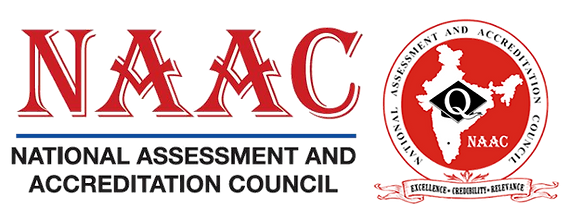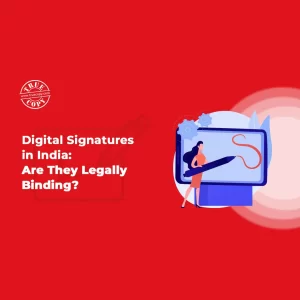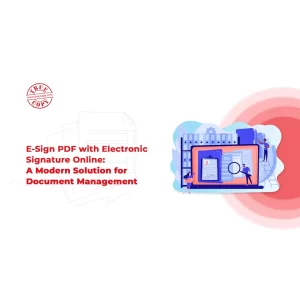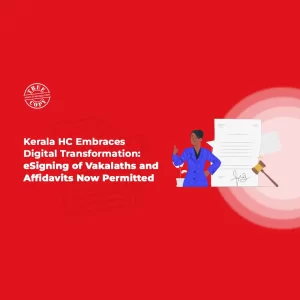Having NAAC accreditation is a vital achievement for educational institutions wanting to improve their credibility, showcase their dedication to quality learning, and establish strong quality compliance mechanisms. However, discovering the procedure can be a little difficult owing to the long documentation requirement, various stages involved, and stringent timeline associated with it. To tackle these issues, digital signatures are rising as a modern, effective, and robust solution that revolutionizes how institutions manage the accreditation procedure; with the simplification of documentation and the assurance of authenticity and compliance, digital signatures for NAAC accreditation support educational institutions in saving time and other critical resources. Here, we will discover the vital role of digital signatures in NAAC accreditation and underline how they elevate the whole process with efficiency and seamlessness.
Overview of NAAC Accreditation

The National Assessment and Accreditation Council, popularly known as NAAC, is vital in assessing and accrediting higher education institutions across India. Securing NAAC accreditation is a sign of academic excellence and an important step for institutes aiming to get additional funding, elevate their reputation, and enhance trust among students, teachers, and other stakeholders. This accreditation ensures that peculiar quality benchmarks are met in education, infrastructure, and governance. However, the extensive procedure needs the institutions to follow a well-rounded process. They should be ready in advance and submit a whole range of documentation, including self-study reports (SSR), annual quality assurance reports (AQAR), and other related data. Efficiently navigating all the functionalities in the process is vital for keeping up with long-term institutional growth and credibility.
What Are Digital Signatures?
A digital signature is an equivalent electronic version of a physical signature curated to offer authenticity, integrity, and non-repudiation to digital documentation. By making use of cryptographic techniques, digital signatures ensure that the document has not been tempered and that the identity of the sender is validated. As they are extensively used across various domains and markets, they come with elevated acceptability and prove to be very valuable in every critical workflow.
NAAC Accreditation and Documentation
The NAAC accreditation procedure requires detailed documentation at every step involved. Institutions must compile, comply and submit:
- Self-Study Reports (SSR)
- Annual Quality Assurance Reports (AQAR)
- Evidence of academic and administrative activities
- Compliance documents for various criteria
Managing these extensive records manually can lead to errors, delays, and compliance issues. At this stage, digital signatures for NAAC accreditation play a vital role.
Why Digital Signatures Are Essential for NAAC Accreditation
- Enhanced Security: Digital signatures provide robust encryption, ensuring the security and authenticity of sensitive documents.
- Efficiency: By taking away the need for physical signatures, institutions can reduce processing time and meet deadlines efficiently.
- Cost-Effectiveness: Digital signatures reduce the expenses related to printing, couriering, and storage of physical documents.
- Environmental Benefits: They promote a paperless process, aligning with sustainable practices.
- Compliance: Digital signatures comply with legal standards, including the Information Technology Act 2000, which governs the legal validity of digital signatures in India.
How Digital Signatures Streamline NAAC Accreditation
Digital signatures simplify the NAAC accreditation process in several ways:
- Faster Submission: Institutions can electronically sign and submit documents instantly, reducing delays in the NAAC accreditation process.
- Reduced Errors: Automated workflows and digital verification help minimize errors and omissions in documentation.
- Traceability: Digital signatures offer an audit trail, supporting institutions in tracking the status and authenticity of the documents submitted.
- Collaboration: All the relevant stakeholders can review and sign the documents without many issues and even from the place of their comfort.
Implementing Digital Signatures for NAAC Accreditation
These are the steps related to the procedure with the implementation of digital signatures for NAAC accreditation are:
- Choose a Certified Authority (CA): In India, digital signatures must be issued by a government-recognized certifying authority.
- Acquire a Digital Signature Certificate (DSC): Institutions must obtain DSCs for authorized personnel, such as heads of departments and administrative officers.
- Integrate Digital Signatures: Use secure platforms that support digital signatures to manage documentation and workflows.
- Train Staff: Ensure faculty and administrative staff are trained in using digital signatures effectively.
Legal Validity of Digital Signatures in India
When we site the Information Technology Act 2000 provisions, digital signatures were awarded similar legal validity and recognition as conventional handwritten signatures. This major calibration ensures that documents signed digitally carry complete legal enforceability, offering a secure and trusted method for authentication of official records. While we look at NAAC accreditation, where a huge requirement of documentation is a vital need, digital signatures have become a very valuable inclusion. They offer authenticity and integrity of submitted documentation and reduce the requirement for physical paperwork.
Additional Benefits of Digital Signatures
- Interoperability: Digital signatures can be utilized across various platforms and formats, ensuring adaptability and ease of use.
- Future-Proofing: As digital transformation keeps on changing the face of administrative procedures, embracing digital signatures helps institutions position themselves well for future technological advancements.
Summing up
Digital signatures change the way how educational institutions manage the NAAC accreditation procedure, providing a contemporary, efficient, and secure solution to conventional issues. Accreditation sometimes needs a wide range of documentation, from self-study reports to annual quality assurance reports, and handling these through traditional ways can be time-consuming, prone to mistakes, and complex. Digital signatures address these issues by providing a legally recognized, secure, and tamper-proof way to authenticate and submit documents. Their compliance with legal standards in India makes them an indispensable tool for institutions seeking to achieve or retain NAAC accreditation. By adopting digital signature technology, institutions can streamline documentation workflows, ensure compliance, and focus on their mission of delivering high-quality education and achieving academic excellence effortlessly.



